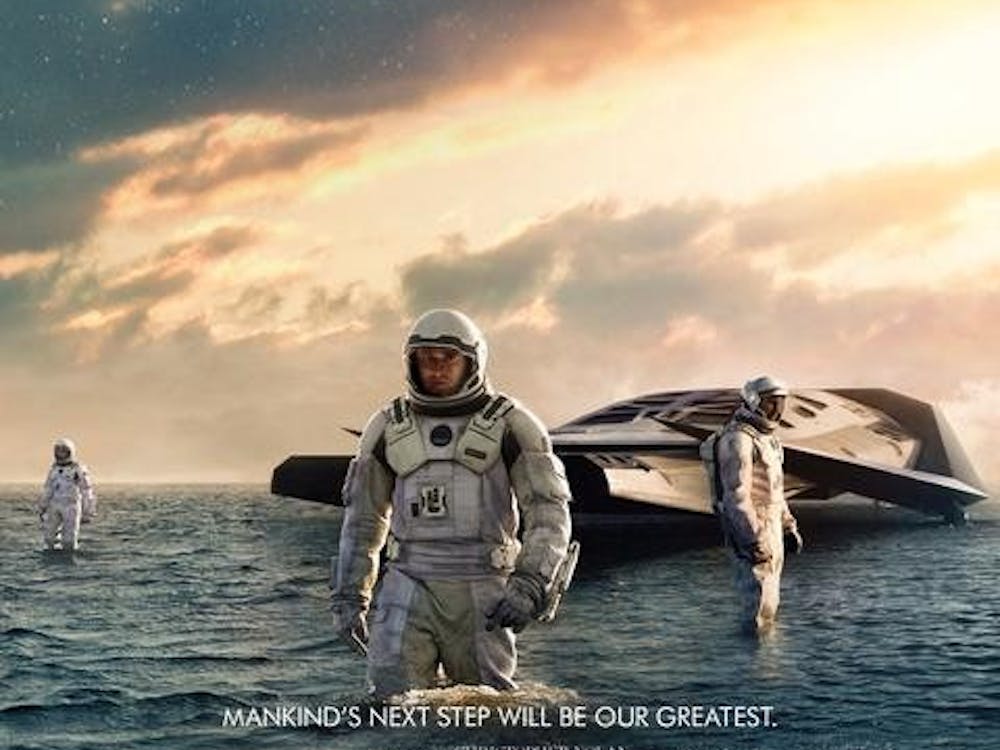Fantasy's about as popular as it gets these days, so the timing couldn't have been better for the long-anticipated release of Peter Jackson's "Fellowship of the Ring," the first installment in the cinematic version of J.R.R. Tolkien's "Lord of the Rings" trilogy. But instead of simply cashing in on this trend, the movie soars to some new cinematic heights and provides a wild ride through the visual splendor of Middle Earth.
The first charge that can be leveled against "Fellowship" is that it drastically reduces the clutter and speeds up the pace of Tolkien's book a bit much. Guilty as charged. But the leisurely pace the novel takes simply would not translate literally to the big screen and could have made for a potentially meandering, dull experience.
Film is about the visual, and Jackson takes advantage of his medium. The massive descriptive passages as well as epic battle scenes in the novel are brought to life in "Fellowship" vibrantly and on an impressive scale.
The plot, largely stripped of Tolkien's embellishments, follows Frodo (Elijah Wood) and Sam (Sean Astin) on a quest to take the One Ring of the Dark Lord Sauron to the Cracks of Doom in order to destroy it. The charming wizard Gandalf (Sir Ian McKellan) helps them along their way and fights the evil wizard Saruman the White (Christopher Lee). Eight others join Frodo, forming what properly is named the Fellowship of the Ring. This fellowship includes a dwarf and an elf, among others, and a lone human warrior with a hidden past, Strider (Viggo Mortensen), adding further muscle for the journey.
|
|
|
And their journey's a doozy. They go across mountains, through rivers, between enormous statues, into the depths of mines and through cities-turned-wastelands. They encounter an enormous array of warriors and creatures to provide plenty of heavy-duty battle and danger.
All three books in Tolkien's "Rings" were produced simultaneously by New Line Cinema (former maverick independent, now an AOL Time Warner Company) at a cost of $275 million. This may sound like a lot, but if this first entry in the series is any indication, $90 million per film was an absolute bargain.
In addition to the epic scope and tremendous location shooting, the film itself is stylish above and beyond the call of duty. The cinematography, in both the sweeping panoramas and the intimate encounters in the cities, is top-notch and highly kinetic. Not to mention the art direction and set design, both of which scream "Oscar!"
As a simple sensory experience, "Fellowship" succeeds. Most mainstream schlockbusters can succeed on this fun brain-dead level, but it's rare that it can be combined with believable emotional content, sympathetic characters and a resonant story. Though it's all very far-fetched and unrealistic, it works. "Fellowship" suspends disbelief and swallows the viewer into its world effortlessly.
All around, the performances are quite good. Elijah Wood, though not particularly established, shines as Frodo and demonstrates that he can quite easily carry the weight of the narrative on his shoulders. Astin, Mortensen, Ian Holm, Cate Blanchett and McKellan also hold their own acting-wise against the baddies, led by the legendary Christopher Lee.
The effects are generally great, with the exception of some soaring scenic images where the characters are obviously digitally inserted into the image to appear walking across it. Some superimpositions to create the illusion of the hobbits' small size also don't work. But 99 percent of the digital work is superb and shows how to effectively use computer technology to assist, rather than shoulder, a movie.
Admittedly, three hours is a long time to sit in the theater, but the experience is so smooth, it feels much shorter. The length is not overwhelming; the episodes move along in well-planned starts and stops.
Enough good things cannot be said about director Pete Jackson. His past efforts were outstanding (particularly "Dead-Alive" and "Heavenly Creatures"), and "Fellowship" shows him not only performing at peak level, but also evolving several steps further as a filmmaker.
"Fellowship" ends in mid-action, setting up viewers perfectly for the upcoming sequel with a title that will probably be controversial for the wrong reasons - "The Two Towers." If the second installment matches the quality of the first, it will be worth three more hours of anyone's time.
Whether or not you read or enjoyed Tolkien's classic books, its dynamite cinematic counterpoint is well worth catching in the big screen. Multiple times, if possible. This "Lord" rules them all.






